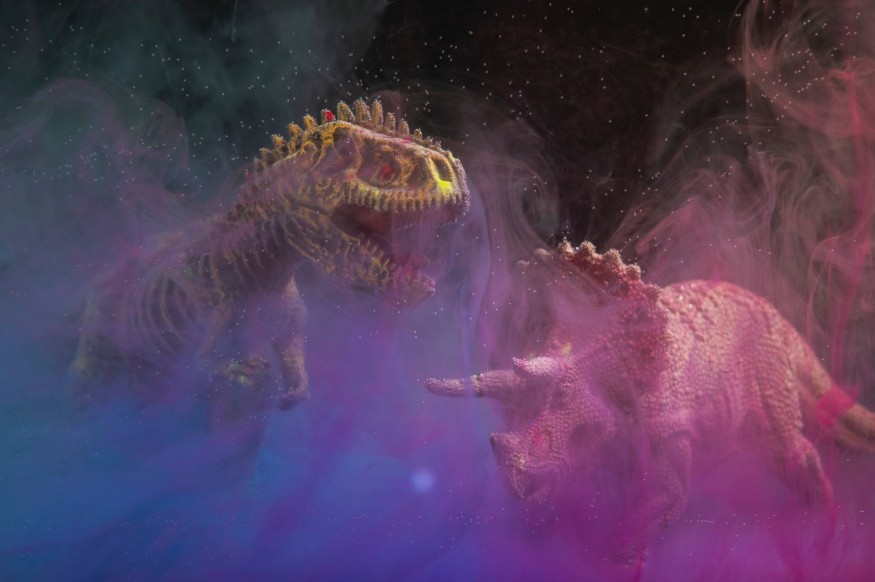Researchers have discovered that the asteroid responsible for the dinosaur extinction released a colossal 2,000 gigatonnes of dust into the atmosphere, potentially contributing to their demise. While the impact's broad consequences are widely acknowledged, the precise sequence of events remains a subject of discussion.

Geographical Black Box Reveals New Clues on Dinosaur Extinction
In a breakthrough, scientists have unveiled a geological "black box" revealing the asteroid's catastrophic impact. This new understanding suggests that the asteroid strike generated a plume of fine dust that had profound consequences. The fine dust cloud obstructed sunlight, causing a drastic cooling of the Earth and disrupting photosynthesis, ultimately leading to a food chain collapse.
The hypothesis of such a dust-induced impact winter was initially proposed in 1980, only to be discarded in the early 2000s due to the limited presence of fine dust in rock samples from the Cretaceous-Paleogene period.
However, this new research delves into a more extensive 1.3-meter-deep sediment deposit in Tanis, North Dakota, situated thousands of kilometers north of the Chicxulub asteroid crater. This deposit offers a unique insight into the dispersion of dust, soot, and particles following the impact.
Through laser analysis, scientists discerned a greater proportion of fine silicate dust in the 0.8 to 8-micrometer range than previously recognized. Computer modeling revealed that this fine dust, a byproduct of the asteroid's impact and rock pulverization, was the most lethal among the particles released when the 10 to 15-kilometer-wide meteorite collided with Earth.
It is estimated that the substantial dust content in the atmosphere led to nearly two years of global darkness, making photosynthesis impossible for plants. In turn, this disrupted the entire food chain, ultimately affecting top predators like Tyrannosaurus rex, which relied on plant-eating prey.
Fine Dust Led to Years-Long Darkness and Coldness
The fine dust from the asteroid impact likely remained suspended for up to 15 years, causing a 15°C drop in global temperatures and a two-year halt in photosynthesis by blocking sunlight.
Vaporized rock and sulfur-bearing gases formed high-altitude particles while intense heat from the impact ignited massive wildfires, releasing soot and ash into the atmosphere. However, research indicates that it was the fine silicate particles, measuring 0.8-8.0 micrometers, rather than sulfur particles, that predominantly caused the extended global winter.
These silicate particles created a global cloud layer, originating from the granite and gneiss rock pulverized during the asteroid impact, forming the Chicxulub crater in the Yucatan.
This resulted in a profound drop in surface temperatures, plunging Earth into an "impact winter." During this period, primary productivity, the process by which plants and other organisms convert inorganic sources into food, collapsed.
The extinction cascade began as plants perished, herbivores starved, and carnivores were left without prey. In marine ecosystems, the decline of phytoplankton disrupts food chains.
Sulfur particles persisted for approximately eight to nine years, while soot and silicate dust remained in the atmosphere for about 15 years. The full recovery from the impact winter took even longer, with pre-impact temperature conditions only returning after about 20 years.
The catastrophic asteroid, estimated at 10-15 kilometers in diameter, marked the end of the Cretaceous Period. The non-avian dinosaurs and dominant marine reptiles were lost, creating an opportunity for mammals to thrive. Fauna and flora that could enter a dormant phase or adapt to a generalist lifestyle fared better. Without this disaster, dinosaurs might still be Earth's dominant species today.
RELATED ARTICLE: Deccan Traps Volcanoes Led to Dinosaur Extinction 300,000 Years Before Asteroid Impact
Check out more news and information on Paleontology in Science Times.












